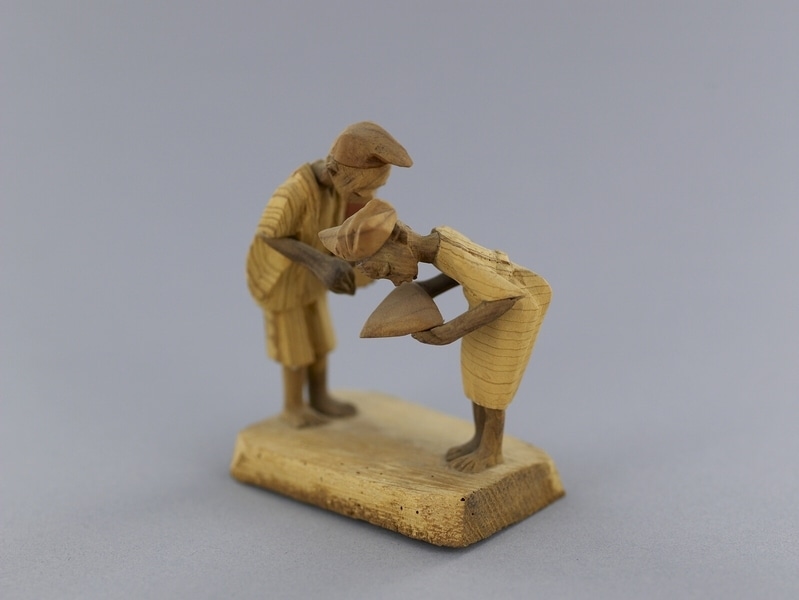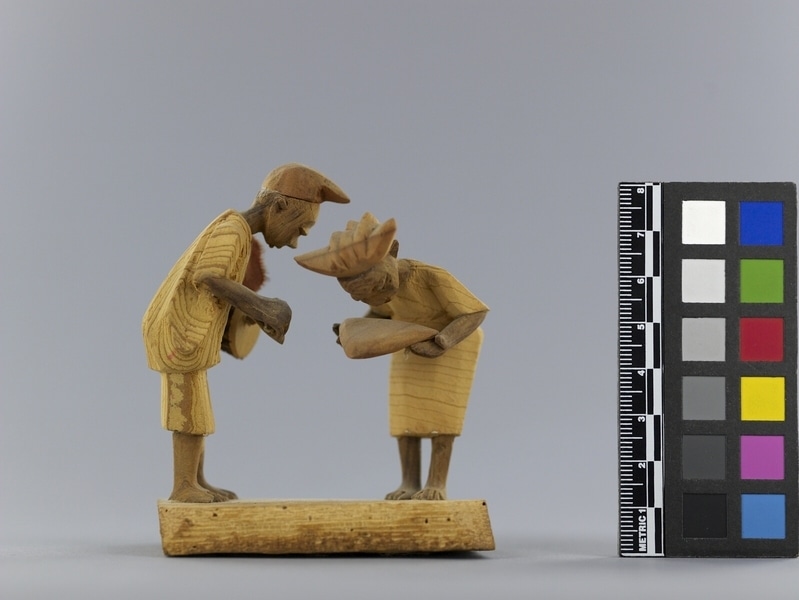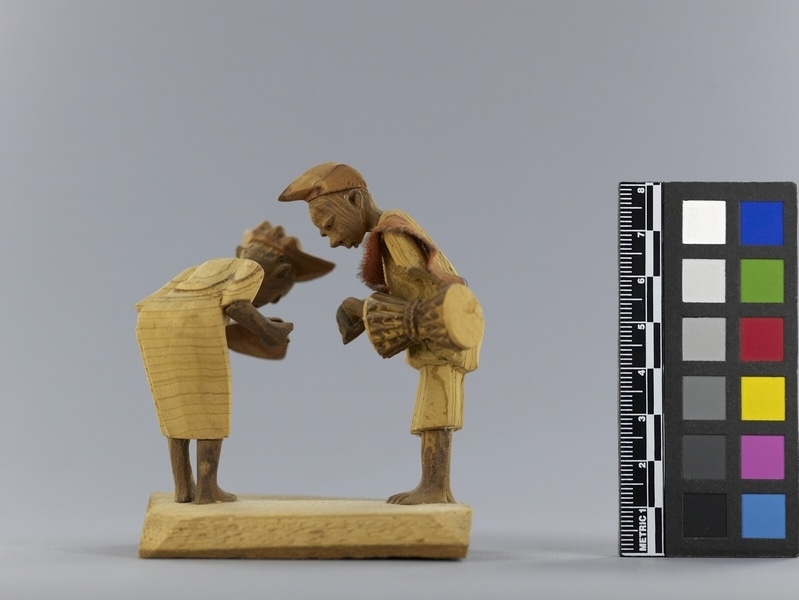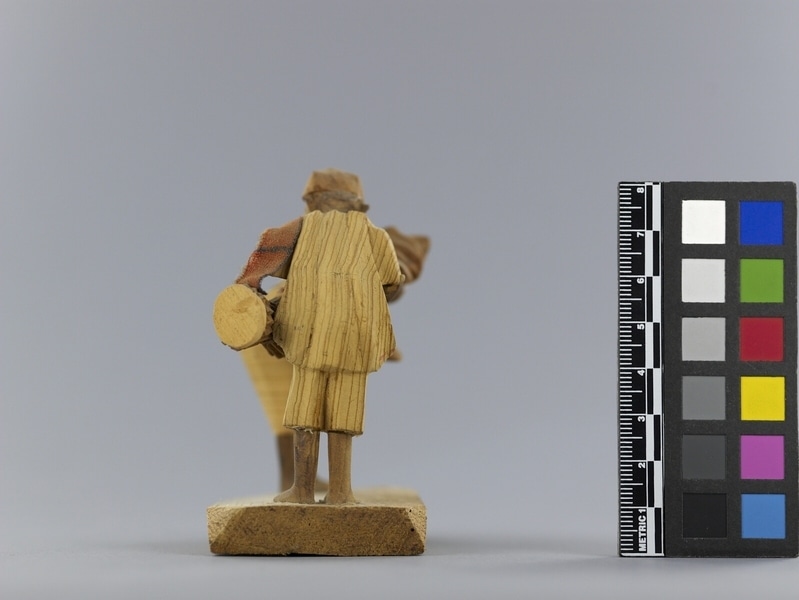Thorn Carving Item Number: Af403 from the MOA: University of British Columbia




Description
Two figures representing a man and a woman. A man with a slightly bent body is wearing a loose fitting shirt with elbow-length sleeves, a soft pointed cap, and knee-length pants. He is playing a double-headed pressure drum which is slung from his left shoulder by a narrow cloth strip. His right hand is holding a bent drumstick with which he is striking one end of the drum. The second figure is bowing, wearing a calf-length dress with elbow-length loose sleeves, and a soft cap with two points. She is holding a triangular, folded cloth with both hands, and her elbows are bent. Heads, limbs, and drum body are dark brown. Clothing and drum heads are light yellow-brown. Caps and folded cloth are light red-brown. Cloth strip is red-brown. On a wood base.
History Of Use
Thorn carvings are miniatures depicting scenes from Nigerian life. This type of carving began circa 1930. Thorns are carved by men and vary in size. They can be as large as 12.7 cm long and 9.6 cm wide. They are comparatively soft and easily carved.
Cultural Context
craft; tourist art
Narrative
This thorn carving was made specifically for the donors by the artist.
Specific Techniques
The light yellow-brown thorn and the dark brown thorn come from the ata tree; the light red-brown thorn comes from egun trees. The parts are glued together with viscous paste made from rice cooked with water.
Item History
- Made in Nigeria before 1972
- Collected during 1972
- Owned by Andrew Stewart and Jessie Stewart before February 8, 1980
- Received from Andrew Stewart (Donor) and Jessie Stewart (Donor) on February 8, 1980
What
- Name
- Thorn Carving
- Identification Number
- Af403
- Type of Item
- carving
- Material
- atum thorn, egun thorn, wood, fibre and rice adhesive
- Manufacturing Technique
- carved and glued
- Overall
- height 8.9 cm, width 8.6 cm, depth 4.9 cm
Who
- Culture
- Yoruba
- Previous Owner
- Andrew Stewart and Jessie Stewart
- Received from
- Andrew Stewart (Donor) and Jessie Stewart (Donor)
Where
- Holding Institution
- MOA: University of British Columbia
- Made in
- Nigeria
When
- Creation Date
- before 1972
- Collection Date
- during 1972
- Ownership Date
- before February 8, 1980
- Acquisition Date
- on February 8, 1980
Other
- Item Classes
- carvings & sculpture
- Condition
- fair
- Accession Number
- 0590/0089